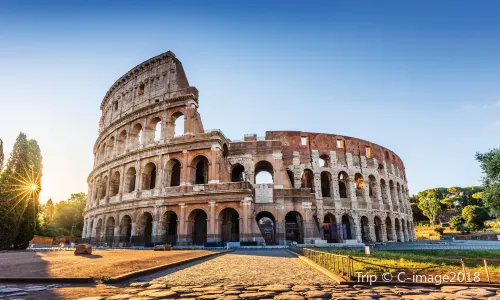Rome

Destinations
Theme Filters
District
Theme Filters
District
- 4.6/51055.76Rome.Colosseo1.4 km from downtown
 Selected for 2 years in a rowHighlights:Magnificent four-story, 80-arch, 240-pillar buildingExperience the epic battles of the ColosseumSaved by 2322 users2065 positive reviews
Selected for 2 years in a rowHighlights:Magnificent four-story, 80-arch, 240-pillar buildingExperience the epic battles of the ColosseumSaved by 2322 users2065 positive reviews - 4.6/51012.97Rome.Pantheon1.7 km from downtown
 Featured in 2025 Global 100 – Best Things to DoHighlights:Admire the design Michelangelo acclaimedGiant dome's sky eye showers natural light and shadowsSaved by 1230 users613 positive reviews
Featured in 2025 Global 100 – Best Things to DoHighlights:Admire the design Michelangelo acclaimedGiant dome's sky eye showers natural light and shadowsSaved by 1230 users613 positive reviews - 4.6/59.328.34Rome.Rome City Centre2.5 km from downtown
 Featured in 2025 Europe 50 – Night AttractionsHighlights:Witness Rome's evolving fortressPanoramic Rome & Vatican viewsSaved by 745 users249 positive reviews
Featured in 2025 Europe 50 – Night AttractionsHighlights:Witness Rome's evolving fortressPanoramic Rome & Vatican viewsSaved by 745 users249 positive reviews - 4.7/58.955.76Rome.Colosseo1.4 km from downtownHighlights:Ancient Roman city center ruins360° view of Rome's centerSaved by 598 users290 positive reviews
- 4.7/58.939.57Rome.Flaminio Parioli1.3 km from downtownHighlights:Unique 2-hour reservation experienceStrict reservation, 2-hour visitSaved by 315 users185 positive reviews
- 4.0/58.9Rome.Flaminio Parioli1.5 km from downtown
 No.1 of Family-Friendly Attractions in RomeHighlights:Art galleries & zoo together17th-century Siena heritage gardenSaved by 150 users
No.1 of Family-Friendly Attractions in RomeHighlights:Art galleries & zoo together17th-century Siena heritage gardenSaved by 150 users - 4.6/58.4Rome.Trevi Fountain Surrounding1.1 km from downtown
 Featured in 2025 Global 100 – Night AttractionsHighlights:Toss coin & revisit RomeNeptune statue & fountain themeSaved by 880 users463 positive reviews
Featured in 2025 Global 100 – Night AttractionsHighlights:Toss coin & revisit RomeNeptune statue & fountain themeSaved by 880 users463 positive reviews
- 1
- 2
- 3
- 4
- 5















